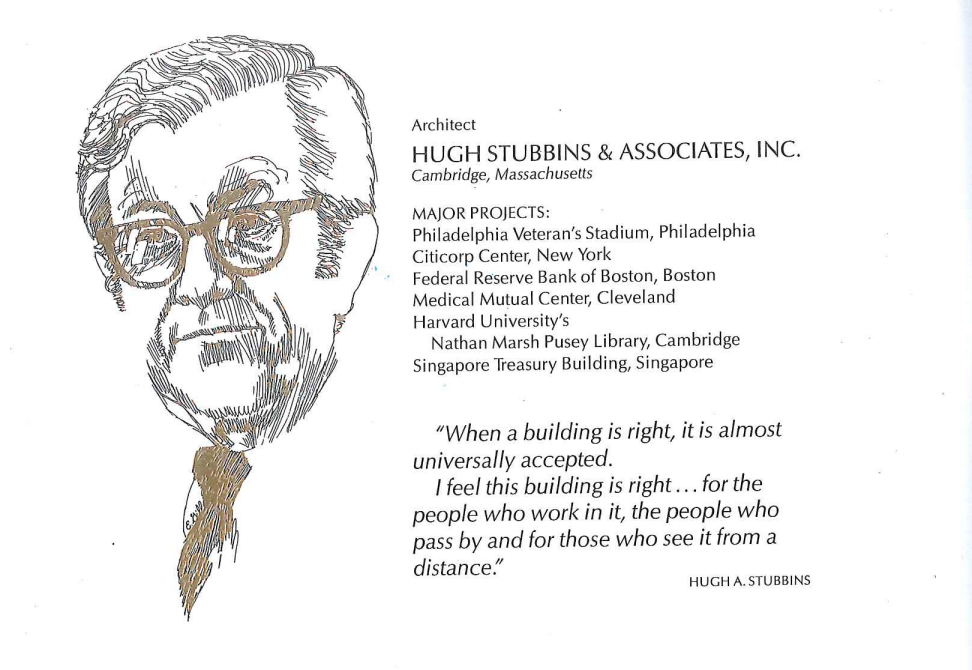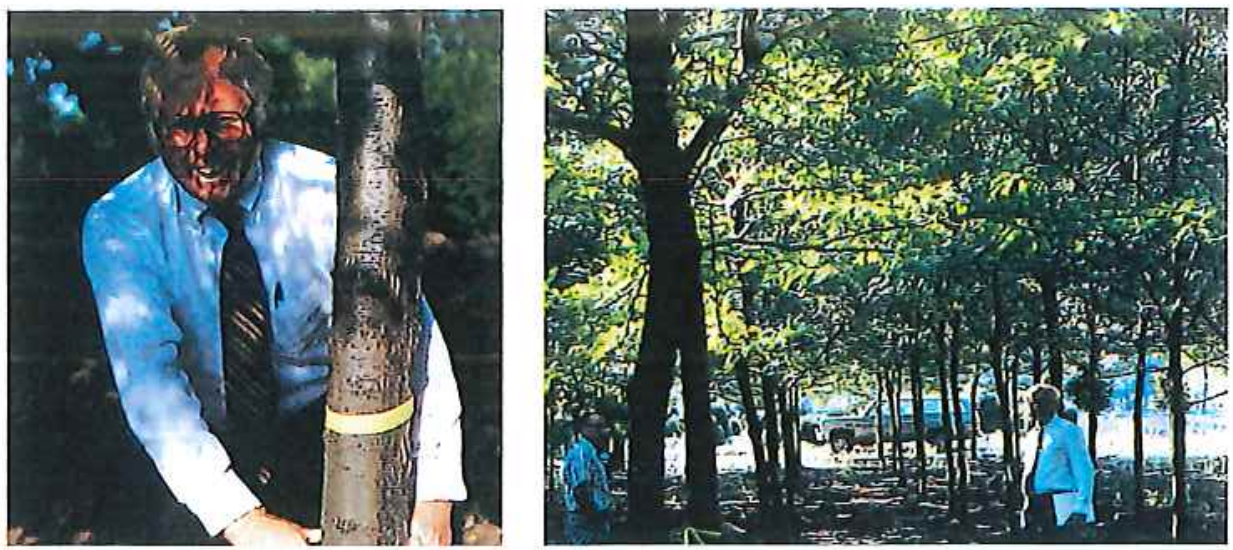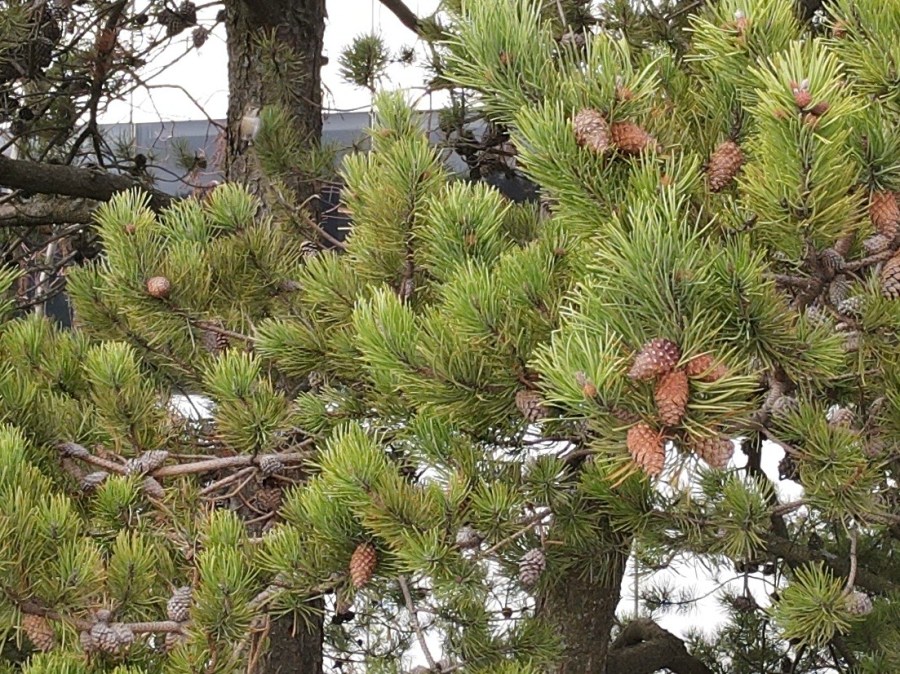PORTLAND, Ore. (KOIN) — Twenty-five stories high in the heart of Portland’s skyline, there’s a local landmark that’s gone overlooked for almost 40 years.
Standing approximately 40 feet tall, the pine prominently planted atop the Pacwest Center’s 25th-floor terrace could be the tallest tree growing from any high-rise rooftop on Earth.
Commuters anywhere southwest of Jefferson Street and 6th Avenue are bound to notice the coniferous evergreen towering above Downtown traffic. Planted shortly after the office building’s completion in 1984, the tree has quietly matured with the Portland skyline, drawing little attention in the last four decades.
While there’s no way to say if the Pacwest pine is actually the tallest tree rooted to the top of a big-city high-rise, some of the country’s top green-roof experts say that it’s a real possibility.
Internationally renowned green roof and horticulture specialist Ed Snodgrass told KOIN 6 News that trees capable of significant growth are rarely planted on high-rise structures due to windy conditions and latent caretaking concerns. As a result, the Downtown pine may be one of a kind.
“While I can’t say your tree is the tallest on a skyscraper for sure, it is doing amazingly well and is a unique feature on a skyscraper,” Snodgrass said. “I don’t know of anything like it off the top of my head.”

Green roof experts Elizabeth Fassman-Beck of the Southern California Coastal Water Research Project and Stephanie Kale with Green Roofs NYC told KOIN 6 that there are several other tall buildings with notable rooftop trees around the world.
A full-grown, 33-foot pin oak, which was hoisted into its planter box by crane, was planted on top of the 17-story Eugenia Place condominium in Vancouver, B.C. in 2017. The oak replaced a tree of similar height that was planted on top of the building in 1987 and died in 2017. Also a unique building topper, the Eugenia Place oak tree falls a bit short of the Portland pine’s stature.

Rockefeller Center in New York City also has a prominent rooftop garden decorated with evergreen trees. However, these trees are a smaller species that are designed to place less stress on the building. The Bosco Verticale towers in Milan, Italy, built in 2014, are also celebrated for the “vertical forest” of trees growing from their exteriors. These trees are also much smaller than the local wonder perched in Portland’s skyline.
“Wow, super impressive,” Kale said after receiving a photo of the Pacwest pine. “Trees like this need a very extensive rooftop to withstand the weight. I have not personally seen or come across in my research a full-sized conifer tree on a roof. For instance, the Rockefeller Center trees aren’t very tall, as their roof likely can’t handle the weight of that many large-scale trees.”
Fassman-Beck said that the Pacwest Center’s terrace technically isn’t a green roof because it wasn’t designed for sustainability. However, she noted that the size of the Pacwest tree does share a similar likeness to the Guinigi Tower in Tuscany, Italy, the oldest green roof in the world. Built during the fourteenth century, the tower is known for its garden of ancient oak trees at its peak.
Pacwest Center developer and original owner of the building John Russell told KOIN 6 News that the tree was four or five feet tall when it was placed in the terrace’s metal planter bed. Now 77 years old, the generously curt real estate tycoon said that he and his wife Mary Fellows still look up at the Pacwest Center and enjoy the pine tree for the oddity that it is.
“The tree just delights me,” Russell said. “It’s quirky and fun.”

Aside from its unique garden, the Pacwest Center is itself an iconic addition to the Portland skyline.
The building was designed by celebrated architect Hugh Stubbins. A professor of architecture at the Harvard Graduate School of Design, Stubbins designed notable buildings like the Citigroup Center in Midtown Manhattan, Berlin’s Kongresshalle, the Federal Reserve Bank building in Boston, Veterans Stadium, the former home of the Philadelphia Eagles, and Singapore’s AXA Tower, which was demolished in 2022.
Like most people affiliated with the Pacwest Center’s creation, Stubbins died many years ago.
“People don’t know about Stubbins because he had very few buildings,” Russell said. “I was lucky.”

Due to the age of the building, few details remain about the Pacwest Center tree’s origins. Based on the documents that the City of Portland was able to find, the city has either lost or misplaced the improvement plans for the tree’s installment. The Pacwest Center’s landscape architect Hugh Mitchell, who Russell said conceived the idea to plant the pine on top of the building’s terrace, has also since passed away. However, a quote provided in the Pacwest Center’s original leasing brochure offers some insight into Mitchell’s thinking.
“Pacwest Center will provide a dramatic addition to the livability of Portland,” Mitchell was quoted saying in the brochure. “By the configuration of street trees, the location of street furniture, roof terraces and multi-level public lobbies, it will enhance the skyline and promote activity.”

Requests for past work orders from the floor’s long-time lease holder Merrill Lynch have yet to produce any insight into the tree’s history. Pacwest Center Property Manager DeAnna Amende was also unable to confirm when the tree was planted or give an estimate of its height.
“We do not have any more information about the tree,” Amende told KOIN 6 news. “It gets checked for safety on a monthly basis. It has never needed to be trimmed. It’s truly self-sufficient. I wish there was something interesting to share. It’s simply a tree on a patio.”
Despite the lack of help from the building’s current owners, some details about the tree were able to be obtained with the naked eye. Russell said that the Pacwest Center’s alternating exterior of silver paneling and tinted windows can be used like a measuring stick, which can give a rough estimate of the tree’s height.
“It’s easy,” Russell said. “The total of the two layers is 13 feet.”

With the tree extending roughly six layers high, it can be surmised that the tree is approximately 40 feet tall. Through some close-up shots of the tree, instructor Whitey Lueck with the University of Oregon’s School of Architecture and Environment was also able to determine the pine’s species. Lueck, who has a background in three fields of botany, horticulture and forest ecology, said the tree is either a “shore pine” or a “lodgepole pine.”
“They’re both native to Oregon — the former along the coast and the latter in the High Cascades as well as in mountainous areas east of the Cascades,” Lueck said. “Even though they have different common names, they’re the same species; just different ‘varieties’ of that species because they’ve lived so far apart from one another for so long.”
Based on the tree’s age and size, Lueck said that unless it’s toppled by wind or limited by soli volume, it could grow to 50 feet or taller. As for the tree’s unique location, Lueck said that the Pacwest Center’s rooftop is as suitable for the tree as any other urban planter.
“It just thinks it’s growing up on a hill,” he said. “Which doesn’t bother it a bit.”